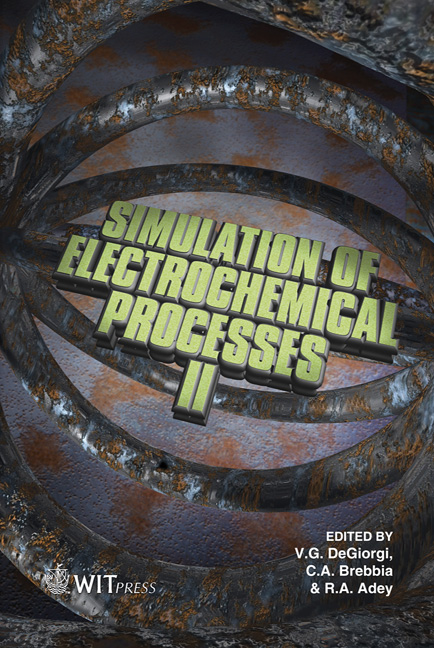Kinetic Monte Carlo Modelling The Leaching Of Raney Ni-Al Alloys
Price
Free (open access)
Transaction
Volume
54
Pages
10
Published
2007
Size
3,496 kb
Paper DOI
10.2495/ECOR070061
Copyright
WIT Press
Author(s)
N. C. Barnard & S. G. R. Brown
Abstract
Raney nickel-aluminium alloys are widely used in powder form as catalysts for hydrogenation reactions. While the catalytic powder may be produced via several processing routes in this paper we are concerned with powders manufactured via spray atomization of liquid metal. Before use, the powdered nickel-aluminium alloy undergoes a leaching process carried out in sodium hydroxide solution which dissolves aluminium from the solid and leaves a nanoscopically porous nickel rich product. This product is sometimes referred to as ‘spongy nickel’. The kinetics of the process is governed by both the rate of dissolution of aluminium into solution and the rate of surface diffusion of the nickel (which promotes the formation of the nanoscopically porous material). However, individual powder particles may contain more than one NiAl phase. Of particular interest to this work are the NiAl3 and Ni2Al3 phases. This paper describes a preliminary attempt to model the leaching behaviour of these two phases using a kinetic Monte Carlo simulation. Keywords: Raney-Ni, leaching, spray-atomization, kinetic Monte Carlo. 1 Introduction Raney-type nickel catalysts have been used extensively in hydrogenation reactions, owing to their high catalytic activity in organic reactions. Raney-type Nickel catalysts are obtained from Ni-Al alloys, whereby a large proportion of the aluminium present is removed via caustic action: immersion in concentrated NaOH solution. The starting composition of the Ni-Al alloy and the leaching time/condition has been shown to have an impact on the structure and catalytic performance of the Raney-Ni product [1-5]. Traditionally, the composition used
Keywords
Raney-Ni, leaching, spray-atomization, kinetic Monte Carlo.





